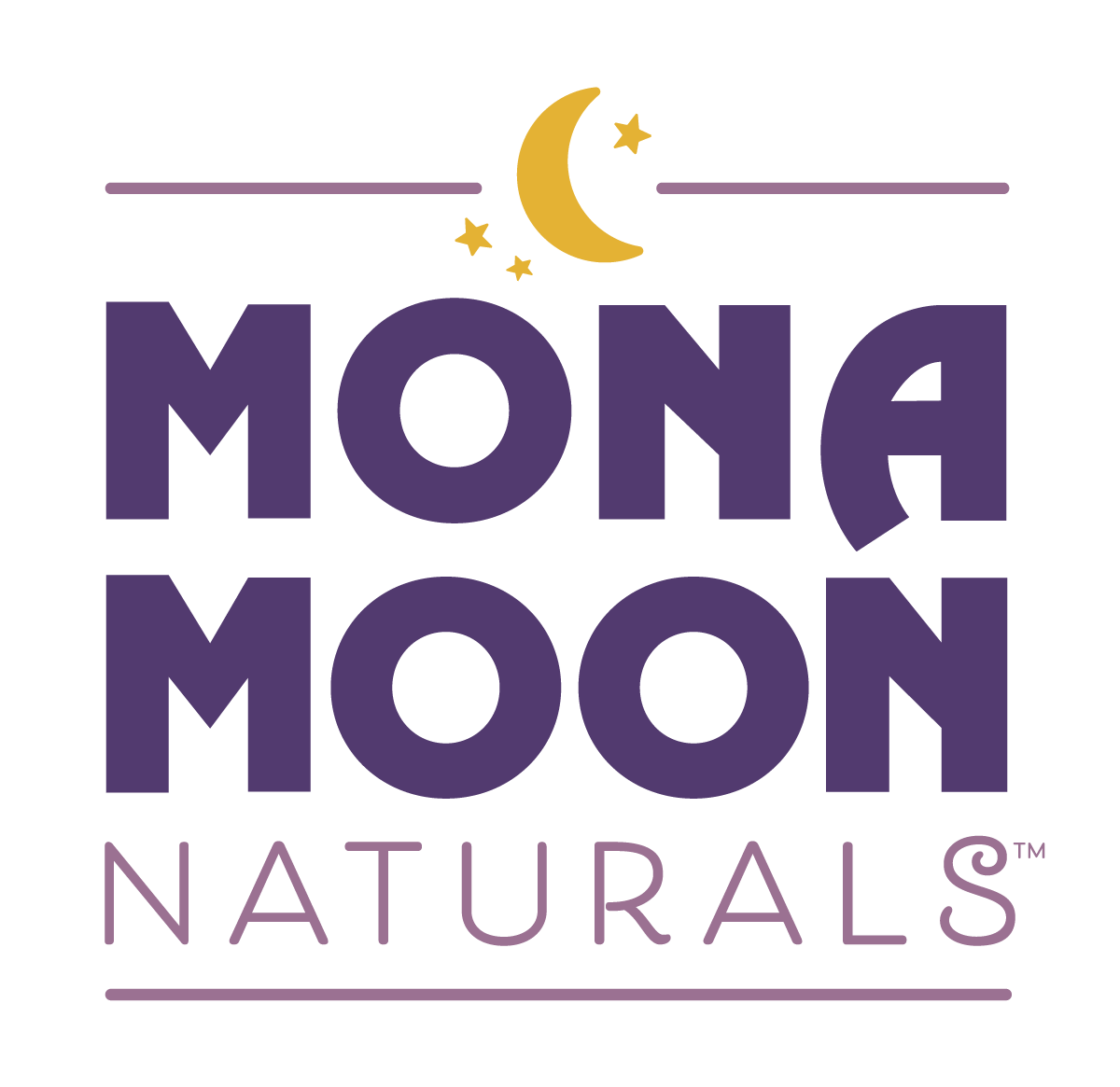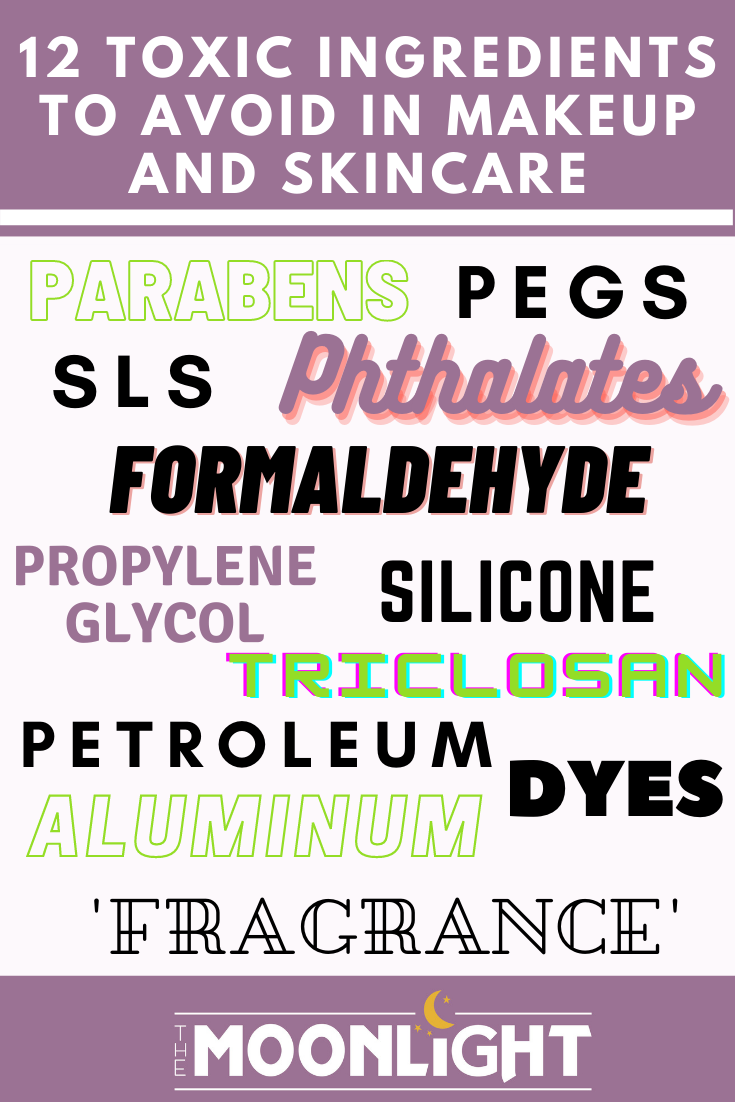Top 12 Toxic Ingredients to Avoid in Makeup and Skincare
Did you know cosmetics don’t need FDA approval to land on the shelves? When we first found out that the ingredients in our daily products could affect our skin, hormones, and overall health, we were shocked. Allergies, skin sensitivities, hormone disruption, cancer - sound scary? While people may argue that it depends on the dose, everything can add up. The ingredients that cause these problems can enter our bloodstream and build up over time and the continuous use of products.
THE PROBLEM BEGINS WITH NO REGULATION
You might be thinking someone must be regulating all those products that line our shelves. Someone like the Food and Drug Administration, maybe?. Well, the FDA has banned the use of only 11 ingredients in cosmetics and even we have a list of 12 that can be harmful. In fact, the European Union has banned 1,300 chemicals from use in cosmetics.
But that is just where the problem begins. Say a product has been reported to cause problems to a consumer. The brand does not have to take the complaint to the FDA, nor does the FDA have any authority to issue a recall of the products.
This is why, it becomes important for us as consumers to educate ourselves about ingredients, labels and safety. While there are literally thousands of ingredients we need to be wary of, here are some we avoid like the plague.
HOW TO CHOOSE SAFER PRODUCTS
While all this can get really confusing there are a couple of sources, available online and as mobile applications, we can rely on.
The Environmental Working Group is a non-profit, non-partisan organization dedicated to protecting human health and the environment. It’s mission is to empower people to live healthier lives in a healthier environment. They conduct breakthrough research and educate the consumer choice and civic action. EWG also has it’s own application The Healthy Living App, where you can scan products with your mobile, read reviews, and pick the best choice for you.
They also have a ranking system that assigns a number to ingredients to reflect the relative impact of each endpoint on health, the environment and other factors considered in EWG’s ratings. We have included the ranks with each of the ingredients we discussed below.
The Think Dirty App is another great resource that works in a similar manner where you can scan products and get easy-to-understand info on the product, its ingredients, and shop cleaner options.
A FEW THINGS TO CONSIDER
Before we dive into the toxic twelve, there are a couple of terms that are common when talking about these ingredients and their adverse effects.
Endocrine Disruptor:
When absorbed in the body, an endocrine disruptor can decrease or increase normal hormone levels, mimic the body's natural hormones, or alter the natural production of hormones.
Carcinogen:
A substance capable of causing cancer in living tissue.
THE TOXIC TWELVE
Parabens
Found in: moisturizer, anti-aging creams, fragranced products, foundation, makeup, hair care products, and shaving products
EWG Score: 7,8
Parabens are preservatives found in everything from soap to moisturizer to makeup. If it has water in it, it probably has a paraben to keep it from growing bacteria, mold, and yeast. Makes sense, doesn’t it? But they do more than that. Parabens have properties that mimic estrogen and are linked to hormonal imbalance, reproductive toxicity, and an increased risk of breast cancer. Absorbed through the skin, they have been identified in biopsy samples from breast tumors. Our rule of thumb is if there is an ingredient with paraben in it, we avoid it. Examples include methylparaben, proplyparaben, isopropylparaben, and isobutylparaben.
2. Phthalates
Found in: nail polish, hair sprays, aftershave lotions, soaps, shampoos, moisturizer, perfumes, and other fragrance preparations.
EWG Score: 7-10
Phthalates are a group of chemicals used to keep plastic flexible and soft instead of brittle. It’s weird that they are also used primarily in fragrances when it comes to the cosmetic industry. Parabens and phthalates are usually the two big buzzwords when it comes to toxic ingredients because both are endocrine disruptors. They have been linked to increased risk of breast cancer, early breast development in girls, and reproductive birth defects in males and females.
Examples include DBP, DEHP, DEP, and others.
3. Formaldehyde
Found in: nail polishes, nail hardeners, eyelash glues, hair gels, soaps, makeup, shampoos, lotions, and deodorants, among other products.
EWG Score: 10
Formaldehyde and formaldehyde-releasing preservatives (FRP's) are another type of chemical used in many cosmetic products to help prevent bacteria growth. Deemed as a human carcinogen by The International Agency for Research on Carcinogens (IARC), it has been linked to asthma, neurotoxicity, and developmental toxicity. It is known to cause allergic skin reactions and it may also be harmful to the immune system.
Examples include quaternium-15, DMDM hydantoin, and imidazolidinyl urea.
Foam from SLS/SLES
4. Sodium Lauryl Sulfate (SLS) / Sodium Laureth Sulfate (SLES)
Found in: Grooming products, such as shaving cream, lip balm, hand sanitizer, nail treatments, makeup remover, foundation, facial cleansers, exfoliants, and liquid hand soap, hair products, such as shampoo, conditioner, hair dye, dandruff treatment, and styling gel, Dental care products, such as toothpaste, teeth whitening products, and mouthwash, Bath products, Creams and lotions
EWG Score: 1-2
Basically, anything that foams probably has SLS/SLES in it. They are surfactants found in 90 percent of personal care and cleaning products as you can see above. What used to be an industrial degreaser is now in almost all our personal care products and can cause skin, lung and eye irritation, and trigger allergies. While it’s EWG score isn’t that high, a bigger concern about SLS is it’s potential to come in contact and react with other chemicals to result in by-products called nitrosamines, a carcinogen. These combinations can lead to a host of other issues like kidney and respiratory damage.
5. Polyethylene Glycol (PEGs)
Found in: cosmetics as surfactants, cleansing agents, emulsifiers, skin conditioners, and humectants.
EWG Score: 2-3
Polyethylene Glycol (PEG) is used in many types of cosmetics as a thickener, especially in lotions, shampoo, and sunscreen. The concern with PEG is not as direct as other ingredients, but rather in how it functions. PEG is often contaminated with or releases both ethylene oxide (a known carcinogen) and 1,4-Dioxane which causes respiratory problems. Long-term exposure can cause irritation of the eyes, skin, nose, throat, and lungs, and damage to the nervous system. PEGs are also formulated to act as ‘penetration enhancers.’ They allow other actives to reach farther into the epidermis of the skin, but in doing so break apart your natural lipid barrier. PEGs dissolve oil and grease. Those are protective oils which when taken off the skin and hair, make them more vulnerable to other toxins.
6. Propylene Glycol
Found in: liquid foundation, spray deodorants, moisturizers, lipsticks, sunscreen, suntan lotions, shampoos and conditioners, baby wipes, and more.
EWG Score: 2-3
Propylene Glycol is a chemical produced as a side effect of petroleum refining. Yes, we’re talking about real petroleum. It is used as a humectant, a preservative, a solvent, or an emollient in a wide variety of personal care products.Often confused with polyethylene glycol (PEG) due to the similar name and function, propylene glycol is a small organic alcohol commonly used as a skin-conditioning agent. It's classified as a skin irritant and penetrator. It is associated with causing dermatitis as well as hives in humans - these effects can be manifested at concentrations as low as 2 percent.
Strangely enough, you'll also find it in your antifreeze, brake and hydraulic fluid, floor wax, and paints.
7. Aluminium
Found in: used as antiperspirants to control sweat, lipstick.
EWG Score: 4-9
Aluminum based-antiperspirants are a particularly important concern for us. Aluminum compounds are also found in cosmetics and studies have shown a connection between aluminum to breast cancer and Alzheimer’s disease.
8. Fragrance
Found in: sunscreen, shampoo, soap, body wash, deodorant, body lotion, makeup, facial cream, skin toner, serums, exfoliating scrubs and perfume.
EWG Score: 8
The fragrance category of ingredients is probably the most deceptively dangerous of them all. Usually there as a disguise for a company’s ‘secret formula’, the word Fragrance or Parfum can hide a cocktail of carcinogens, allergens, endocrine disruptors, and irritants. The manufacturer isn’t required to reveal anything that goes under that name.
Almost every single conventional cosmetic and skincare product (even ones that are “unscented”) contains artificial fragrances. According to the Environmental Working Group (EWG) Skin Deep Database, these fragrance cocktails have been associated with allergies, dermatitis, respiratory distress, and potential reproductive disruption.
9. Dyes
EWG Score: 1-10
The letters FD&C or D&C represent artificial colors in a product. F representing food and D&C representing drugs and cosmetics. These letters precede a color and number (e.g., D&C Red 27 or FD&C blue. These synthetic colors, derived from petroleum or coal tar sources, are suspected to be a human carcinogen, a skin irritant and are linked to ADHD in children.
10. Silicone/Siloxanes
Found in : haircare products, skincare, foundation
EWG Score: 1-2
Siloxane, a popular ingredient widely used in haircare, reduces frizz and adds shine. While it appears as if your hair is stronger after the use of such products, silicone actually creates a plastic-y layer over the hair shaft, disguising rather than treating the damage.
In skincare, siloxane provides smoothness and allows for the product to glide on the skin. Like every other ingredient siloxane also has its benefits but there are many risks surrounding it. It has been found to be toxic, persistent, endocrine disrupting and has links to fertility issues.
11. Petroleum
Found in: shampoos and conditioners to anti-aging creams, body lotions, mascaras, perfumes, lipsticks, lip balms, foundations, hair relaxers, conditioners, eye shadows, and nail polishes.
EWG Score: 1-4
Petrolatum, commonly known as petroleum, is a gelled mineral oil. It's used as a conditioning agent, meant to seal in moisture. It is a byproduct of refining petroleum. When fully refined, it's safe for external human use—with research showing no health concerns. However, as it's not regulated by the FDA, it's possible that the petroleum that ends up in beauty products is contaminated. The primary contaminant is polycyclic aromatic hydrocarbons (PAHs), which has been shown in human studies to be a carcinogen. When purchasing a petroleum product, ensure that it has been vetted and verified as fully refined.
12. Triclosan
Found in: Soap, cosmetics, deodorant, toothpaste
EWG Score: 3-7
Tricolson was once widely used as an antimicrobial chemical in health care products but after being banned, is now found in personal care products. It is a known endocrine disruptor - especially the thyroid and reproductive hormones, and a skin irritant. Triclosan was also shown to contribute to gut inflammation and promote tumor growth. Studies raise concerns that triclosan contributes to making bacteria antibiotic-resistant. There wasn't enough supporting evidence that washing with antibacterial soaps containing triclosan provides any benefit over washing with regular soap and water.




